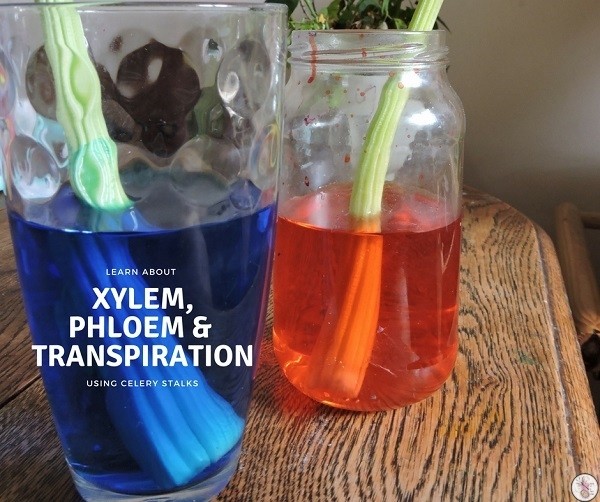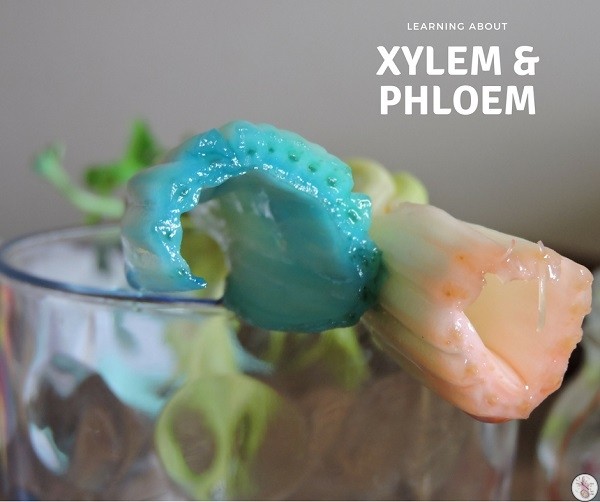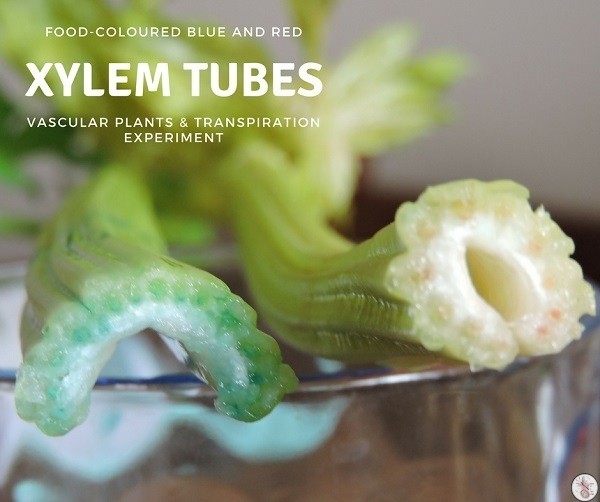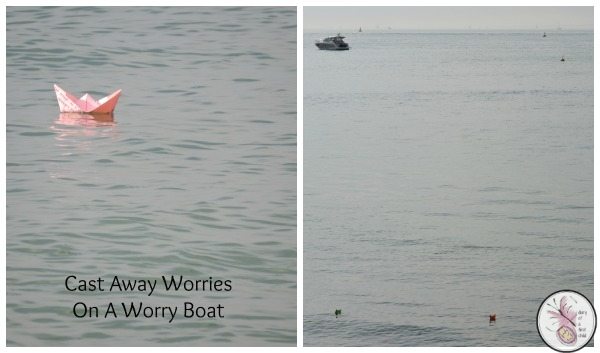Signing up for Developing Expert’s science curriculum has worked really well for us for all the reasons I’ve explained already, and over the last few weeks we’ve been looking at how plants reproduce, and how they feed themselves, as well as the role of photosynthesis and the presence of chlorophyll. All really big words, explained nicely in the teaching materials. One of the things that came out of this week’s exercises and experiments was transpiration – how water moves through a plant and evaporates from aerial parts, such as leaves, stems and flowers and a by-product of that experiment was being able to clearly see the xylem tubes in a celery stalk.
Xylem, Phloem and Transpiration Experiment
The experiment was simple:
- Two half-glasses of water
- Two celery stalks
- Two food colours – We opted for blue and red as they should contrast well against the green
Add a few drops of food colouring to the water. Cut an inch or so off the stem of the celery stalk and the stalk in the coloured water.

The process of transpiration starts pretty instantly, but the full effect should become clear overnight.
Lift the celery out of the water (don’t get the liquid on your clothes as it may stain) and examine the bottom. You should quite clearly be able to see the xylem tubes.

There might be some staining from the food colouring, so cut away another inch or so and you should be able to see the tubes clearly with no other staining.
Examine the leaves. The xylem tubes carry the water all the way through to the leaves. Phloem tubes are for the relocation of substances such as glucose and minerals to other parts of the plant.

Try cutting along the leaf stalks to see how far you can trace the xylem tubes.
We’ve been trying for a week to remember which part is xylem and which part is phloem, but following this experiment it’s a lot clearer now.
We had a look at it with our new pocket microscope and it was amazing to see so much detail, thanks to the food colouring!

If you look at the leaves you’ll see the food colour has moved into the leaves between the veins – thank you phloem and the process of transpiration.

Tip: Don’t use really old celery or with dead leaves. It does require the plant to still be living enough to carry water to the leaves.
You can sign up to Developing Experts with a free account (as a homeschooler) which allows you to have a browse around the site, though you’ll have to subscribe to have access to any of the lessons.
Curriculum links:
Sc3/2.1c investigate the way in which water is transported within plants
Click the link below for more year 3 science
More posts about plants:


This does not make sense. It does not explain which is Xylem and which is Phloem, despite claiming to do so? To quote:
“…which part is xylem and which part is phloem, but following this experiment it’s a lot clearer now.”
“The xylem tubes in a celery stalk.” “The xylem tubes carry the coloured water up the stem ” “the phloem carries it to the leaves, where you should be able to see the food colouring on the surface between the veins.” Not really sure how to make that clearer?